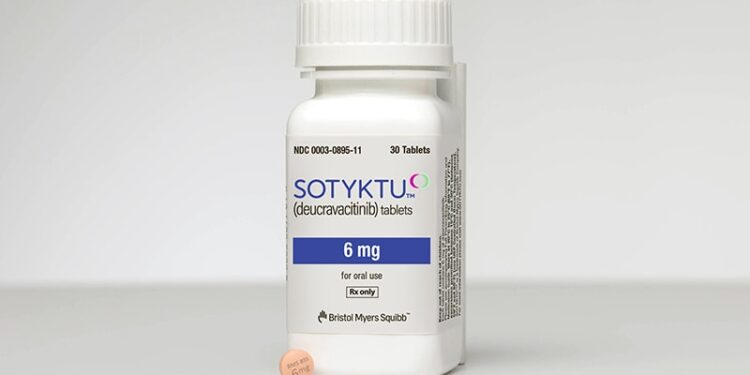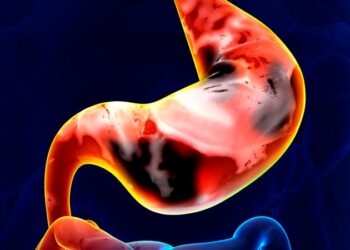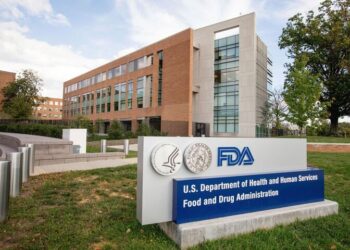ORLANDO, Fla. — A second phase 2 trial with the tyrosine kinase 2 (TYK2) inhibitor deucravacitinib has met the primary efficacy endpoints for the treatment of the skin manifestations of cutaneous lupus erythematosus (CLE).
Unlike an earlier study, which was restricted to patients with systemic lupus erythematosus (SLE), the most recent trial enrolled patients with the most common forms of CLE, which are discoid lupus erythematosus (DLE) and the subacute form of CLE (SCLE), reported Victoria P. Werth, MD, chief of the Division of Dermatology at the Veteran’s Administration Medical Center, Philadelphia.
In this trial, called PAISLEY-CLE, which was presented as a late-breaker at the American Academy of Dermatology (AAD) 2025 Annual Meeting, both of the active study doses of deucravacitinib were superior to placebo for the primary endpoint of percent change in the Cutaneous Lupus Erythematosus Disease Area and Severity Index and Activity (CLASI-A) score.
Benefit Apparent at Week 4
“The difference between those on active treatment and those on placebo was already substantial by week 4,” reported Werth, who noted that CLASI-A scores for those on deucravacitinib were still improving relative to placebo at the end of 16 weeks of treatment. At that point, those in the placebo arm were given the opportunity to switch to the active drug.
Randomization to deucravacitinib 3 mg twice daily, deucravacitinib 6 mg twice daily, or placebo was performed on a 1:1:1 basis, placing 25 patients in each active treatment arm and 24 patients in the placebo arm.
In this multinational trial, the baseline characteristics in the three groups were similar, with a mean age of about 45 years. More than two thirds of patients in each arm were women. About 75% of patients had a baseline CLASI-A severity > 10 points, meaning at least moderate mucocutaneous inflammation.
Relative to the 28.4% reduction in the CLASI-A score from baseline at 16 weeks among those on placebo, the 47.5% reduction in the 3 mg twice-daily deucravacitinib arm (P = .0670) and the 50% reduction in the 6 mg arm (P = .0385) were greater. Relative to the 5.3-point mean reduction in the CLASI-A score among those on placebo, the mean reductions of 9.3 points (P = .0425) and 8.7 points (P = .0805) in the 3 mg twice-daily and 6 mg twice-daily deucravacitinib arms, respectively, were also greater.
The advantage for the active treatment arms was even greater for CLASI-50 and CLASI-70 responses. For CLASI-50, the proportion meeting this endpoint was more than double for those randomized to the 3 mg twice-daily dose of deucravacitinib relative to placebo (56.7% vs 19.0%; P = .0092). For the CLASI-70 endpoint, the advantage was more than threefold (49.5% vs 15.9%; P = .0284).
“Consistent with the known profile of deucravacitinib,” Werth reported that only a limited number of side effects were more common on either dose of TYK2 inhibitor relative to placebo. These included headaches (12.0%, 4.2%, and 0% in the 3 mg twice-daily deucravacitinib, 6 mg twice-daily deucravacitinib, and placebo groups, respectively), dermatitis acneiform (8%, 20.8%, and 0%, respectively), and upper respiratory tract infections (8.0%, 12.5%, and 4.2%, respectively).
No Significant Safety Signals Observed
There were no reports of cardiovascular adverse events or opportunistic infections, but rates of serious infestations or infections were higher in the 3-mg group (4.0%) and 6-mg group (4.2%) than in the placebo group (0%). There were no discontinuations from the study for an adverse event, although two patients (8%) in each active treatment arm vs no patients in the placebo arm requested treatment discontinuation.
Laboratory markers for creatine kinase, liver function tests, platelets, hemoglobin, and lymphocytes were generally unchanged over the course of treatment, Werth reported.
The results of this trial follow those of PAISLEY-SLE, which was published in 2022. In that phase 2 trial, 363 patients with SLE were randomized to one of three doses of deucravacitinib (3 mg or 6 mg twice daily, 12 mg once daily) or placebo at 162 sites in 17 countries. The primary endpoint was the SLE Responder Index 4 (SRI-4) at week 32.
For the most effective deucravacitinib dose, which was 3 mg twice daily, the odds ratio (OR) of a reduction of at least 4 points in the SLE Disease Activity Index (SRI-4 response) was nearly three times greater (OR, 2.8; P < .001) vs placebo. The odds ratio advantage of the other two doses for this response compared with placebo was 1.9 with the 6-mg dose (P = .02) and 1.6 for the 12-mg dose (P = .08).
In reviewing those data, Werth pointed out that CLASI-50 responses for those on the 3-mg dose were superior to placebo across subgroups. For the 3-mg dose vs placebo, the CLASI-50 responses were 69.6% for SLE alone (vs 16.7% in the placebo group), 71.4% for SLE and DLE (vs 25.0% for placebo), and 100% for SLE and SCLE (vs 0% for placebo).
These findings overall have raised expectations for the phase 3 POETYK SLE trials that are underway. These trials (POETYK SLE 1 and POETYK SLE 2) are now recruiting patients and have the potential to support regulatory approval of deucravacitinib (Sotyktu), which is approved for the treatment of psoriasis, if safety and efficacy are confirmed.
Although Eric F. Morand, MBBS, PhD, head of Rheumatology at Monash Health, Melbourne, Australia, is awaiting results of the phase 3 trials to confirm the promise of deucravacitinib in cutaneous lupus, he is optimistic. Although not involved in the PAISLEY-CLE trial, he was the principal investigator for PAISLEY-SLE.
“TYK2 inhibitors have great promise as next-generation treatments for SLE, including in patients with cutaneous lupus,” said Morand, when asked to comment. However, he is uncertain whether TYK2 inhibitors will be used alone or in combination if the phase 3 trials are positive.
“Current trials add agents like deucravacitinib to existing standard-of-care treatments, but as guidelines evolve, we could see such agents being used earlier and earlier in the treatment paradigm [assuming] the phase 3 trials confirm their efficacy and safety,” he told Medscape Medical News.
Werth reported financial relationships with more than 25 pharmaceutical companies, including Bristol Myers Squibb, which provided funding for the PAISLEY-CLE phase 2 trial. Morand reported financial relationships with AbbVie, Amgen, AstraZeneca, Biogen, Bristol Myers Squibb, EMD Serono, Eli Lilly and Company, Janssen Pharmaceuticals, Gilead Sciences, GlaxoSmithKline, Genentech, Novartis, Takeda, and UCB.
Source link : https://www.medscape.com/viewarticle/phase-2-trial-supports-tyk2-inhibitor-cutaneous-lupus-paving-2025a10007sp?src=rss
Author :
Publish date : 2025-04-01 10:47:00
Copyright for syndicated content belongs to the linked Source.














